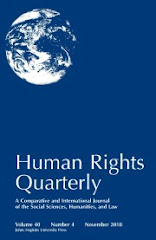Under the framework of the WTO Member States are allowed to respond to three types of imports which harm or have the potential of harming a domestic industry. The imports in question are those which either involve a State subsidy, for example an export subsidy from the State where the goods are being exported from; or where goods are being imported at a price that is less than the price they are being sold at in the exporting State (practice known as dumping); or where there is a sudden surge of imports which injure the domestic industry. With respect to each of these different types of imports under the WTO a Member is entitled to avail itself of certain trade remedies namely the imposition countervailing measures with respect to subsidised goods; anti-dumping measures with respect to dumped goods; and safeguard measures with respect to the situation where there is a sudden upsurge of imports.
The apparatus and framework within which trade remedies in the WTO can be imposed by a Member are highly technical, and trade remedies historically are rooted in developed States in particular the United States and Europe. However, many developing countries have now introduced legislation enabling them to use trade remedies, and have acted under the legislation. Trade remedies are of particular significance to developing economies both in terms of their need to respond to flows of imports as well as recipients of such responses. Indeed, such is the perceived importance of trade remedies in relation to developing countries that the Doha Round of trade negotiations have stalled as a consequence of disagreement between developed and developing countries over the particular design of the Special Safeguard Mechanism in the agricultural sector. This book approaches the issues relating to trade remedies from a developing country perspective. Drawing on the practice of a number of developing and developed countries the book explores how developing countries relate to trade remedies both as users of trade remedies as well being on the receiving end of such responses to their exports. The book clarifies what the issues, problems and perspectives are, or ought to be, relating to trade remedies in terms of advancing development and the spectrum of developing countries. The book looks at the following questions, among others:
- What is the appropriate threshold for the use of trade remedies for the differing developing countries? Should there be differing thresholds according to the level of development?
- How are developing countries affected by the divergence of trade remedies in Regional Trade Agreements?
- Do trade remedies empower developing countries with respect to multinational corporations and powerful States?
- What are the rent seeking/corruption aspects of trade remedies that particularly haunt developing countries?
- What kind of reforms need to be brought in trade remedies to particularly safeguard the interests of developing countries in their use and abuse?
Wednesday, May 16, 2012
Qureshi: Trade Remedies: A Development Perspective
Asif Qureshi (Univ. of Manchester - Law) has published Trade Remedies: A Development Perspective (Routledge 2012). Here's the abstract:





